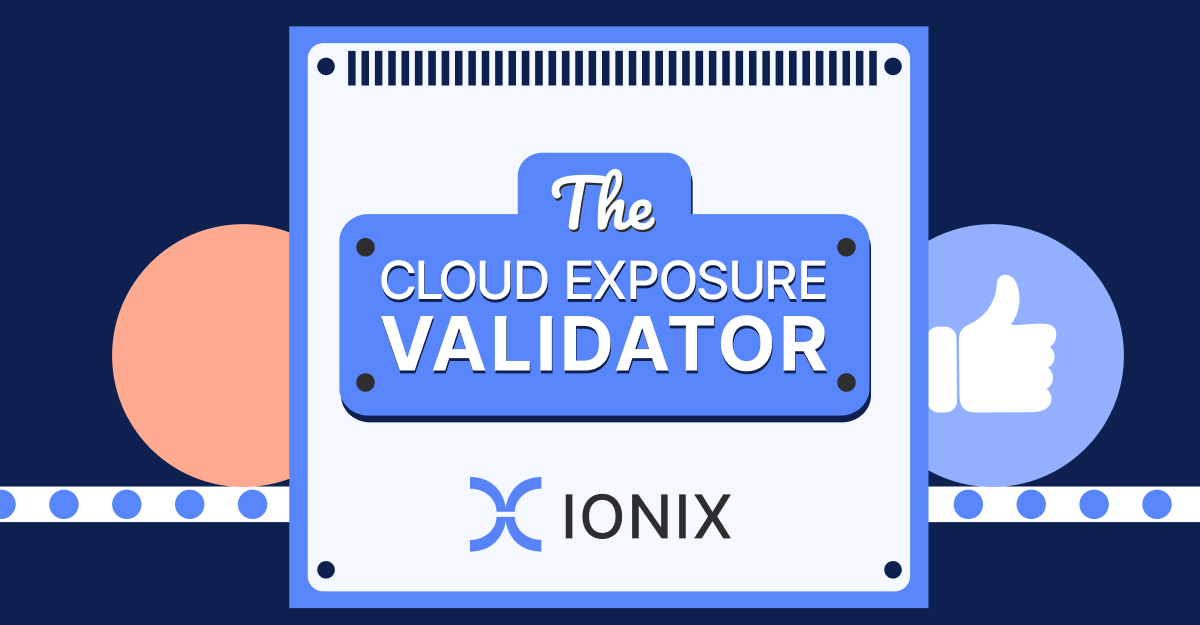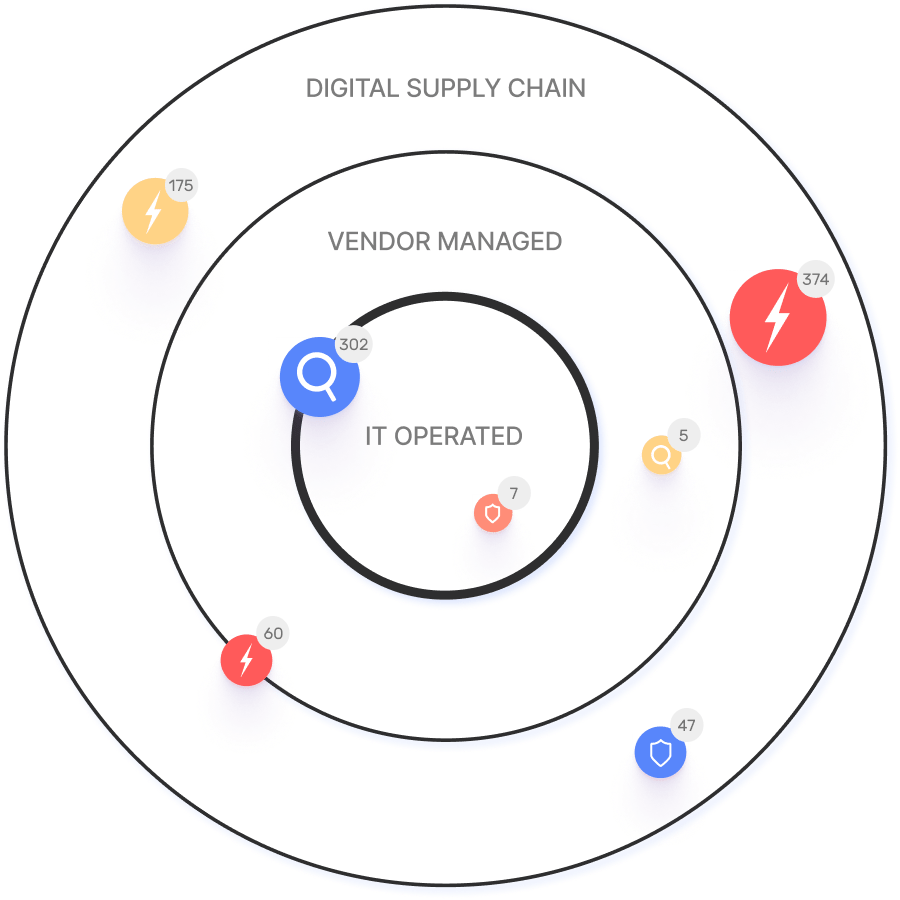Vulnerability assessments use automated scans to achieve surface-level visibility into an organization’s digital attack surface. Vulnerability scanners search for software with known vulnerabilities and prioritize it by severity, enabling security teams to apply patches or take other steps to remediate these threats.
In this article
How does it work?
Vulnerability assessments leverage automated tools to quickly identify surface-level vulnerabilities in an organization’s attack surface.
- Assessment Scoping: A vulnerability assessment begins with identifying the assets that will be included in the assessment. This might involve defining IT ranges or specifying assets and endpoints based on their role in the business. Additionally, the organization needs to decide where to run the scanner (inside or outside the perimeter) and whether to provide it with privileged access. Depending on the scan location and type, a scanner may identify different issues.
- Automated Scanning: Vulnerability assessments use automated scans to identify known vulnerabilities in software and operating systems (OS). To do so, the scanner will collect information about a particular piece of software and then check if it has any Common Vulnerabilities and Exposures (CVE) listing associated with it.
- Analysis and Prioritization: At the end of the scan, the tool will have a list of vulnerabilities associated with the various systems within the scope of the assessment. These vulnerabilities are then prioritized for remediation based on the Common Vulnerability Scoring System (CVSS) scores associated with their CVE listings.
- Reporting and Remediation: The output of a vulnerability scan is a report detailing the actions taken, findings, and recommendations for how to remediate identified threats. The security team can take this list and address the detected vulnerabilities in order of priority.
The importance of vulnerability assessments
Software vulnerabilities are a major issue for most companies. In 2024 alone, over 40,000 new vulnerabilities were assigned CVEs. While not every vulnerability affects a particular organization, and many are not exploitable, most companies have numerous unpatched flaws in their software.
Regular vulnerability assessments provide companies with visibility into the software bugs that pose the most significant risk to their businesses. Testing regularly and rapidly addressing the most severe vulnerabilities in the list increases the company’s probability of finding and closing vulnerabilities before they can be exploited by an attacker. By doing so, the organization dramatically reduces the cost and risk associated with a vulnerability.
The limitations of vulnerability assessments
Vulnerability assessments can provide real value to an organization, but they have their issues as well. Some of the main limitations of vulnerability assessments include:
- Lack of Validation: Vulnerability scanners identify vulnerabilities based on whether the version of the software running in an organization’s environment has known CVEs. However, it doesn’t validate the exploitability of these vulnerabilities, which can lead to false positive detections. These errors may result in wasted time and effort eliminating a non-existent threat while other, exploitable vulnerabilities are ignored.
- Limited Visibility: Vulnerability scanners look for known vulnerabilities with associated CVEs. However, this misses other potential threats, such as misconfigurations or errors in custom code that could be identified and exploited by an attacker.
- Severity-Based Prioritization: Vulnerability scanners typically use CVSS scores to prioritize the vulnerabilities that they define. However, this lacks valuable context about the role of the software in the business and the potential impacts of an attack on critical assets and workflows.
- Stale Results: Vulnerability scans are a snapshot of an organization’s attack surface, but new threats are discovered all the time. If vulnerability assessments aren’t performed regularly, security teams may be working based on outdated information and lack visibility into new, major threats.
Vulnerability assessments vs. penetration tests
Vulnerability assessment and penetration tests are both designed to help an organization identify potential security gaps in its digital attack surface. However, they have significant differences, including:
- Scope: Vulnerability assessments perform a broad, surface-level assessment of known vulnerabilities and perform no validation. Penetration tests are typically more focused, testing for weaknesses in particular systems.
- Automation: Vulnerability assessments use automated scanners to identify vulnerable software. While penetration testers may also use these tools, these exercises involve manual testing and more in-depth analysis.
- Depth: Vulnerability assessments perform surface-level analysis, looking for a weakness that an attacker may use to gain initial access to an organization’s environment. Penetration testers exploit and chain vulnerabilities to simulate real-world attacks and achieve predefined goals.
In general, vulnerability assessments are cheaper and easier to perform but only provide surface-level information and frequent false positives. Penetration tests are more expensive, but they offer a deeper look and validate any identified vulnerabilities.
Learn more: read our detailed guide about vulnerability assessments vs. penetration tests.
How to choose a vulnerability assessment tool
When evaluating potential vulnerability assessment tools, consider the following factors.
- Scalability and Coverage: Vulnerability assessments are intended to provide visibility into potential risks to the business, which makes any blindspots dangerous for corporate security. A tool should be able to scan all parts of an organization’s infrastructure with support for a broad range of connected systems.
- Update Frequency: New vulnerabilities are discovered daily, and cybercriminals often move quickly to exploit newly published ones. A vulnerability assessment tool should perform frequent database updates to ensure that it offers visibility into the latest threats.
- Ease of Use: A vulnerability scanner may balance ease of use against the level of configurability available. Look for tools that provide the greatest range of capabilities at an acceptable level of complexity.
- Reporting Capabilities: At a minimum, a vulnerability scanner should provide a list of the vulnerabilities identified on scanned systems. However, they can also provide additional information of value, such as remediation advice or insights into compliance risks.
It’s also important to consider that running a tool in-house isn’t an organization’s only option for vulnerability assessment. Vulnerability Assessment as a Service offerings can provide better results and access to subject matter expertise while avoiding the need to maintain this knowledge in-house.
How IONIX can help
Vulnerability assessments can be a useful tool for bolstering corporate cybersecurity, but they have their limitations. IONIX’s comprehensive attack surface management solution provides more complete and up-to-date visibility into an organization’s real risk exposure, offering:
- Comprehensive, attacker-centric attack surface discovery
- Proactive, automated risk assessment
- Business-centric risk prioritization
- Automated remediation of the most exploitable risks
To learn more about reducing your organization’s attack surface with IONIX, book a demo today.



